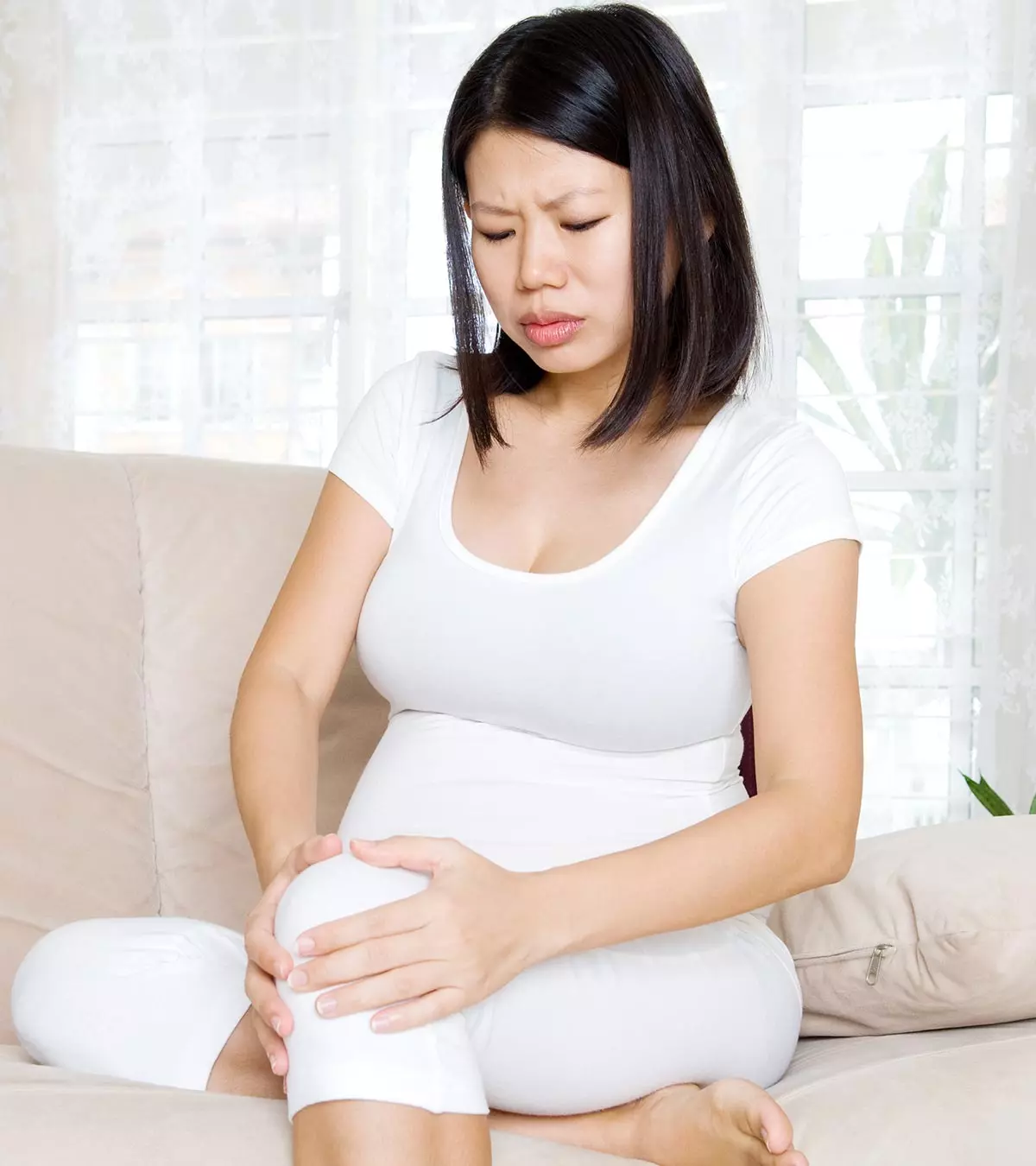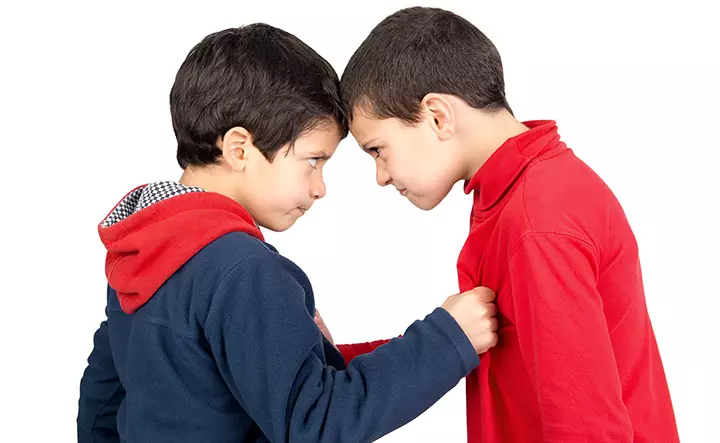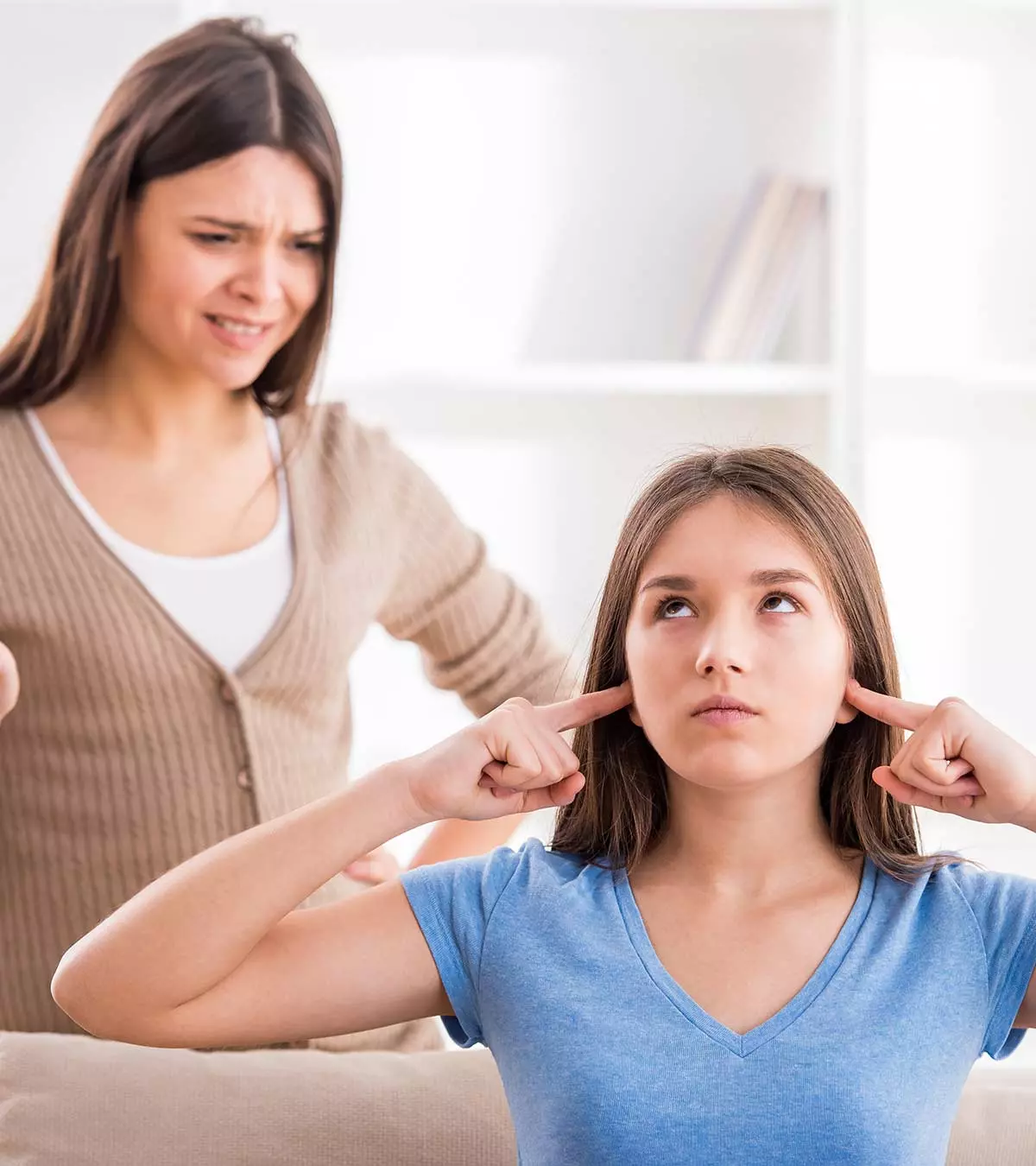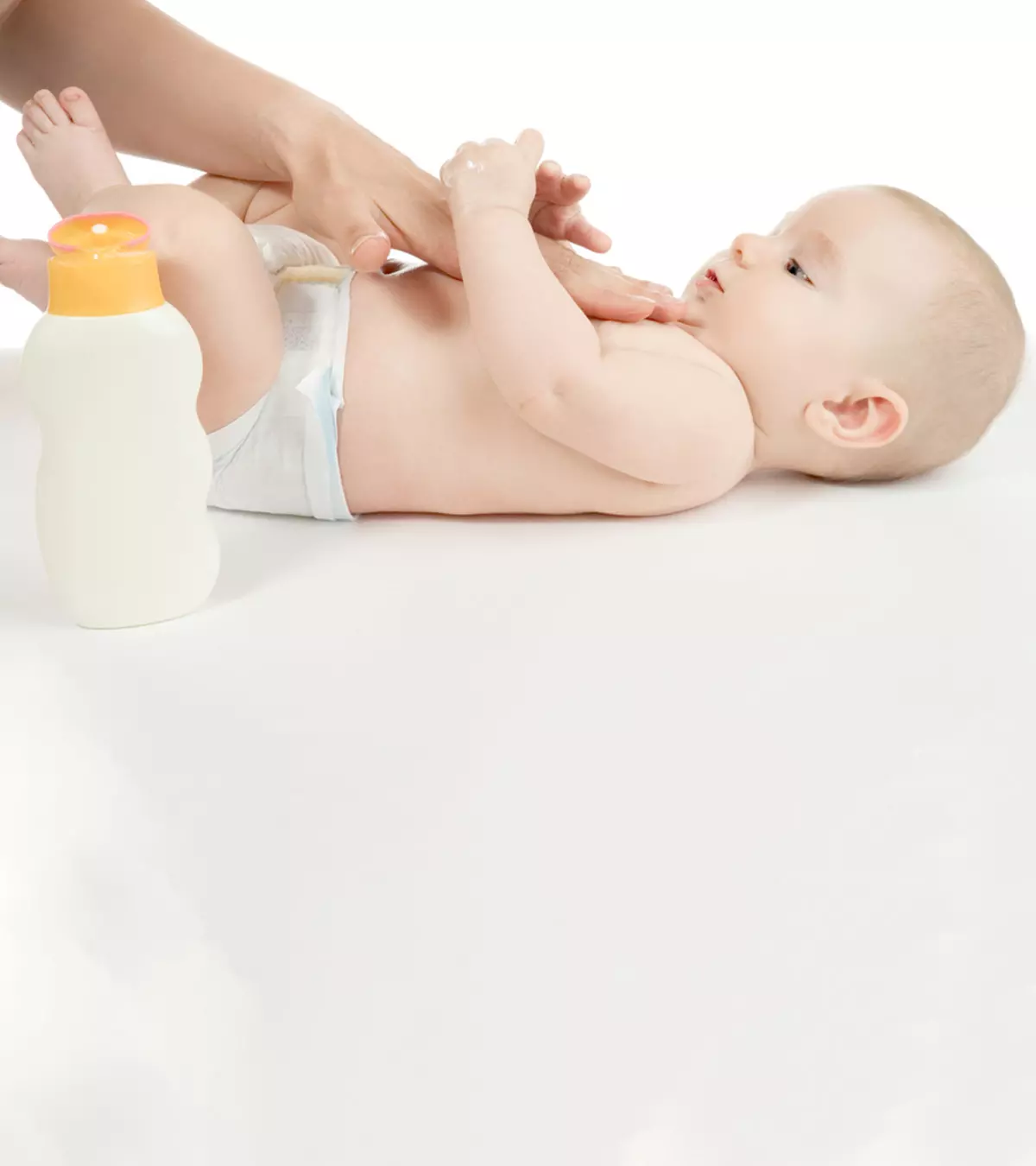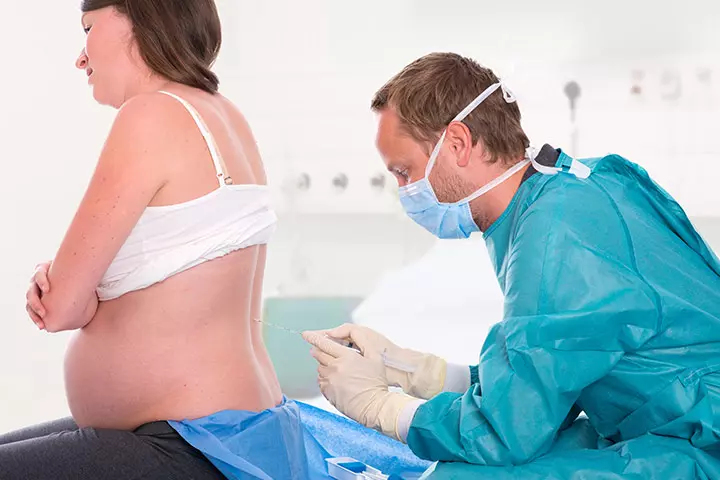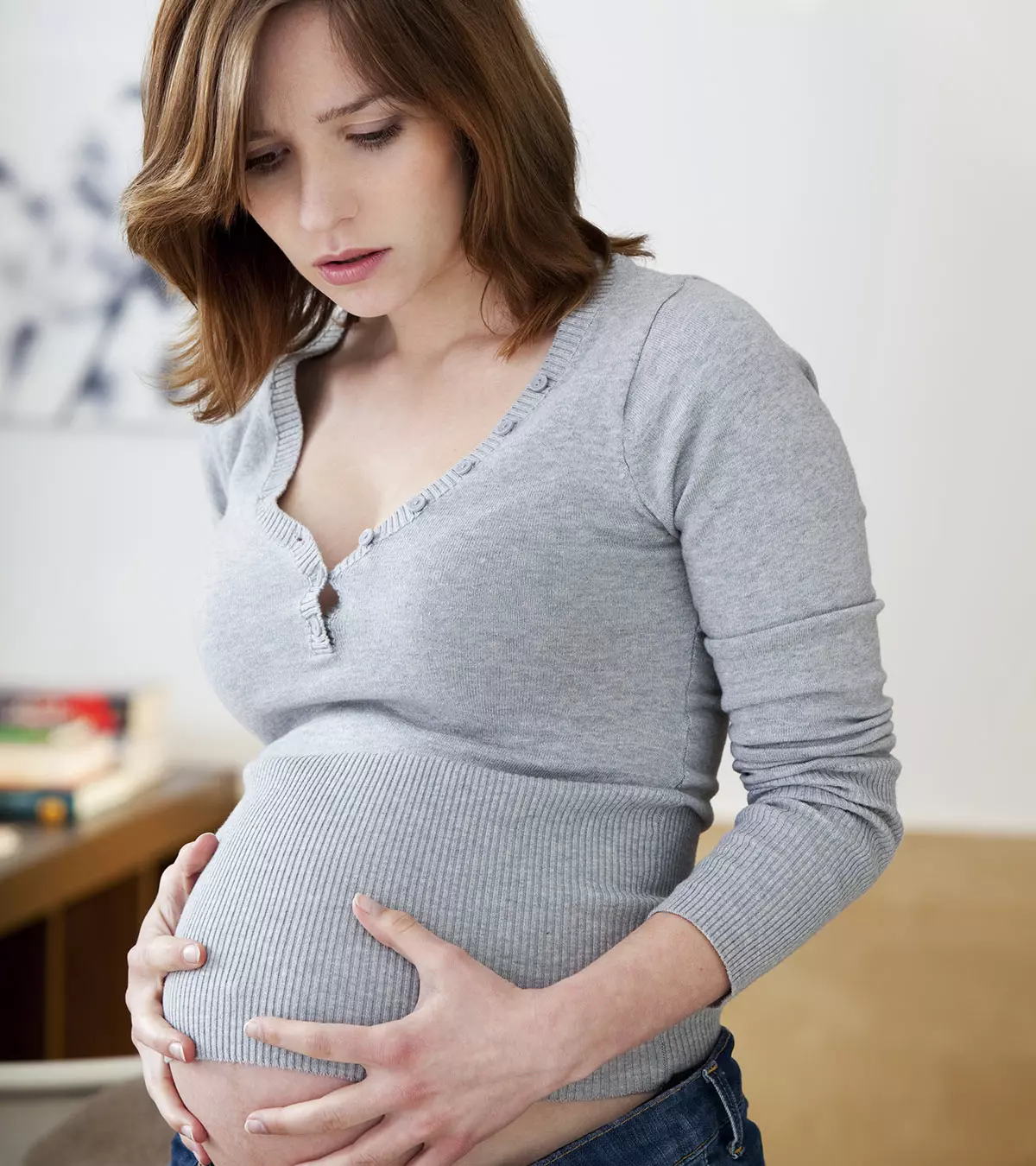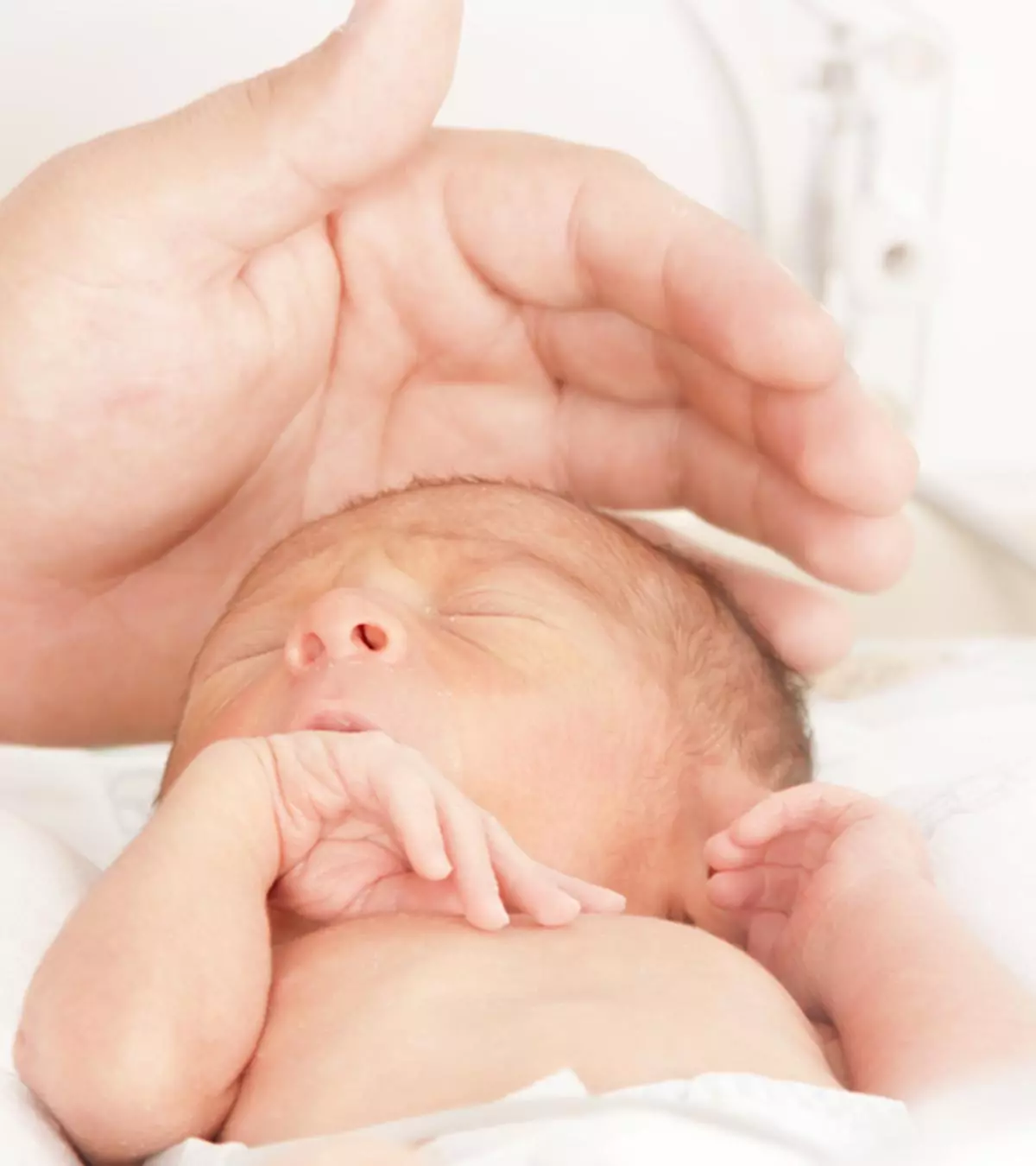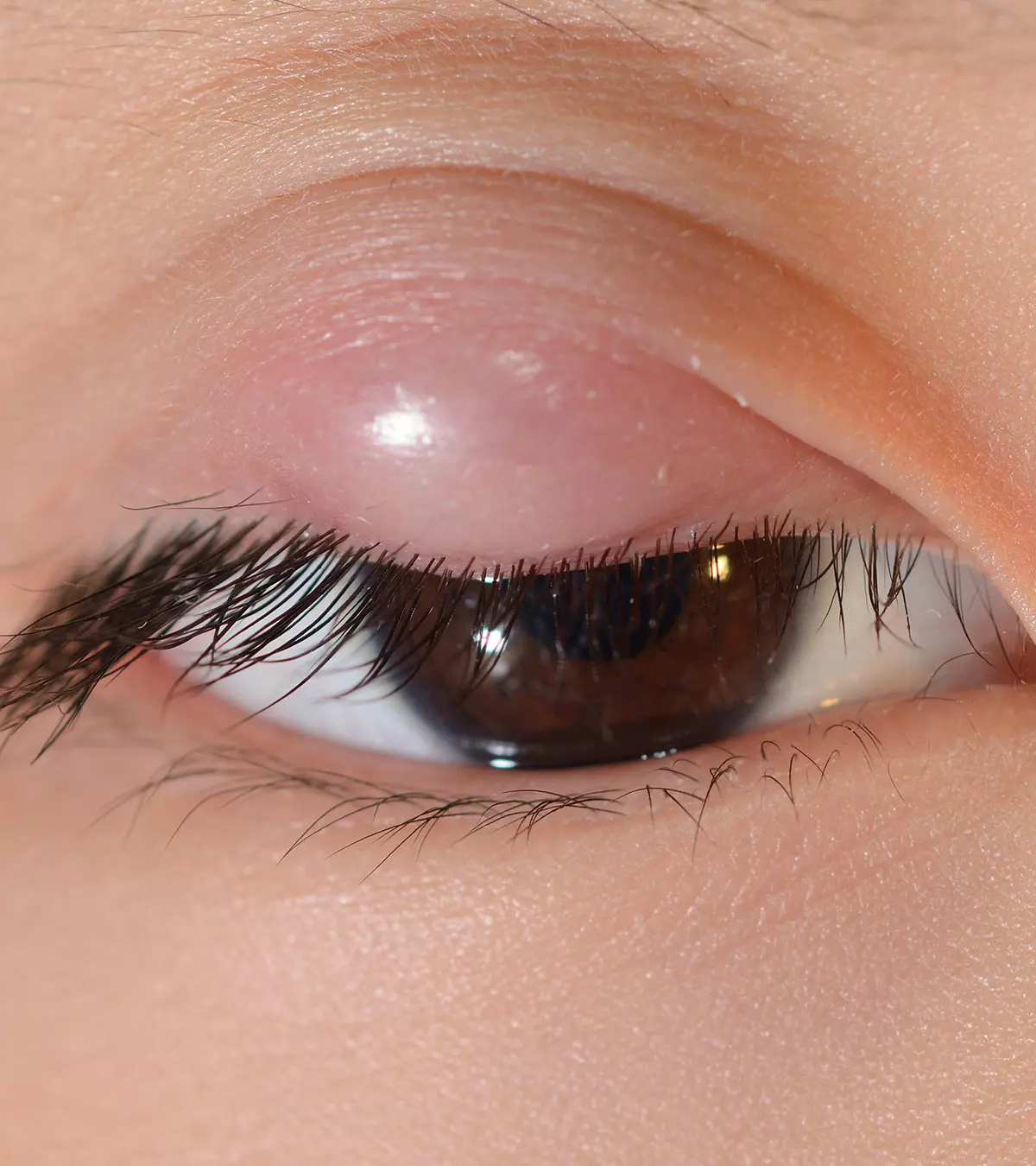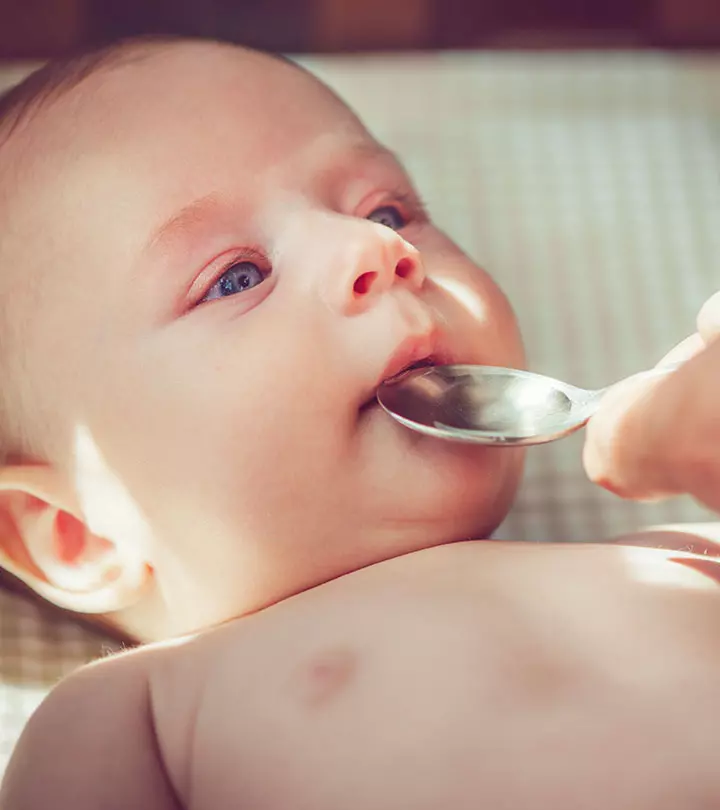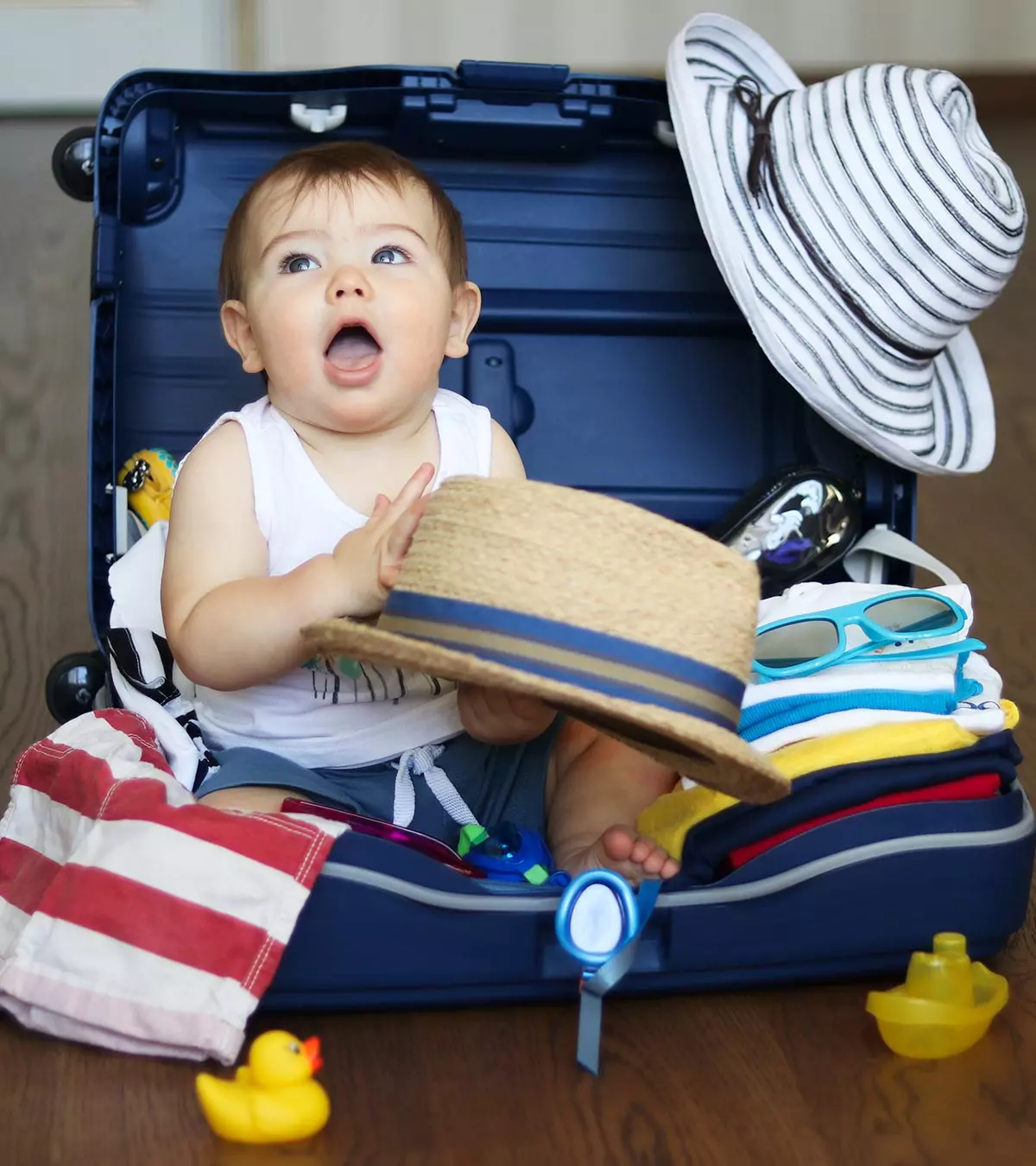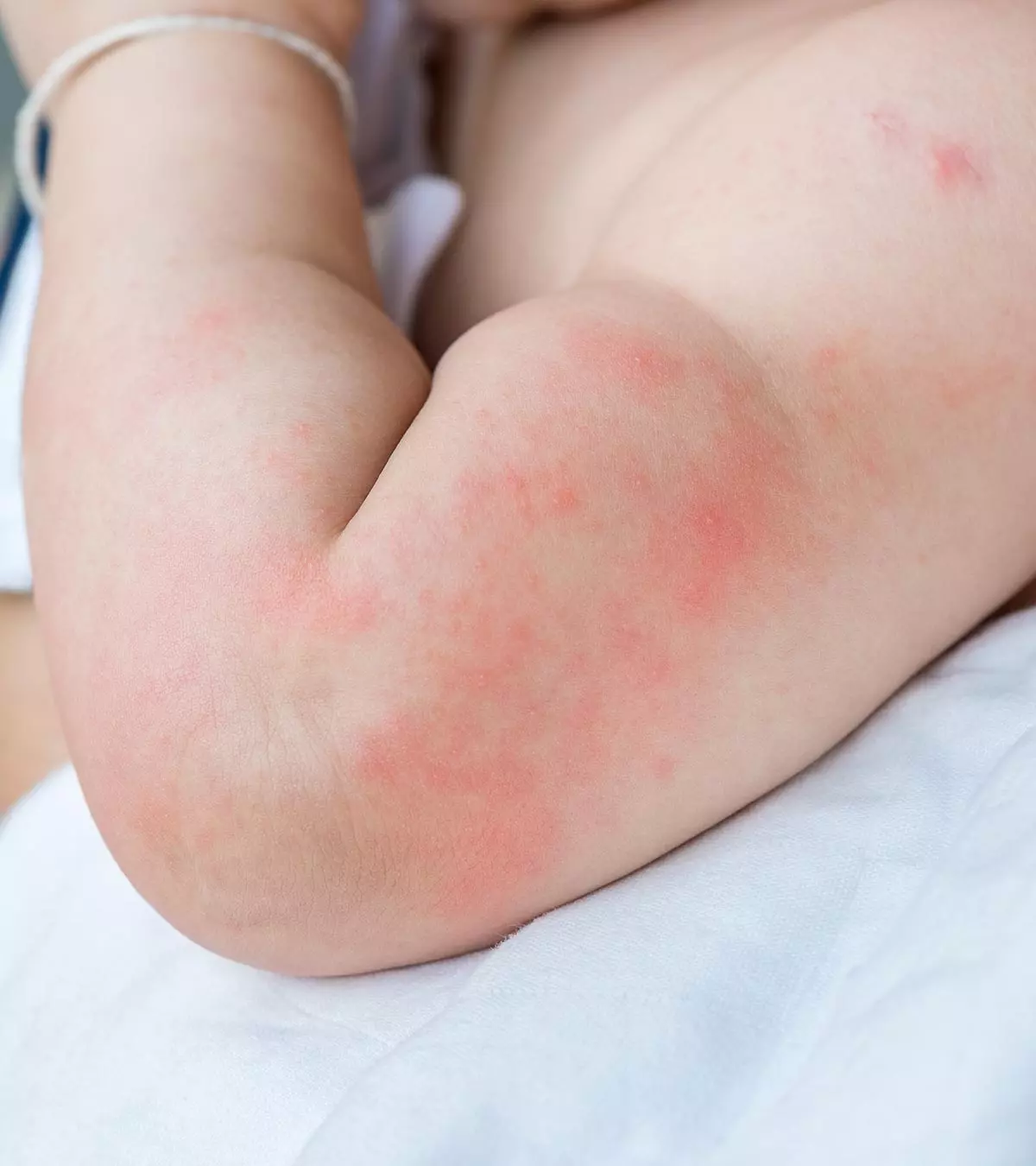
Baby’s skin is very delicate, so they are more likely to develop various skin problems. One such condition is skin hives in babies. It can cause rashes all over the body, leaving your baby irritable and itchy. Hives on a baby’s skin can occur due to several factors. Therefore, recognizing its symptoms as soon as possible can help in timely treatment and management to alleviate discomfort and complications in babies.
Read on to learn about the causes, symptoms, and tips to manage skin hives on baby, ensuring caregivers feel equipped and informed when dealing with this condition.
Key Pointers
- Hives in babies are a skin reaction that presents red and itchy bumps on the body.
- Possible triggers of hives in infants include various conditions such as sweat, friction, infections, allergies, and more.
- Antihistamines are commonly prescribed for hives, while steroids are used only in severe cases. Treating underlying infections may also be necessary.
- Home remedies for hives in babies may include cool baths, compresses, loose clothing, and anti-itch creams.
- Preventing hives in babies involves avoiding allergens, maintaining proper hygiene, a comfortable temperature, and using appropriate laundry detergents.
What Are Hives?
Hives is a skin reaction characterized by tiny, red bumps localized to a body part or spread across the body. It is also called urticaria or skin hives. Hives can appear and then completely disappear in a few hours. They could also switch places by randomly disappearing on one part of the body and appearing on another (1). It can sometimes be associated with a condition called “angioedema” which is puffiness swelling of the face, eyelids, ears, mouth, hands, feet, or genitals.
Several conditions and situations can trigger hives in infants.
What Cause Hives In Babies?
According to the American Academy of Pediatrics, reasons are unknown for about 30% of cases of skin hives caused in infants (2).
Hives form when blood plasma leaks out of the blood vessels and flows into the skin. The leakage is caused by the chemical histamine, which is secreted by the immune system cells called mast cells that are present in the bloodstream. Mast cells release histamine to cause hives in the following conditions:
- Sweat-induced hives occur due to playing, heat, or even thick clothing. This condition is called cholinergic urticaria. The reasons for this skin hives, too, are unknown, but it is believed that it happens due to the skin’s hypersensitivity towards its sweat (3).
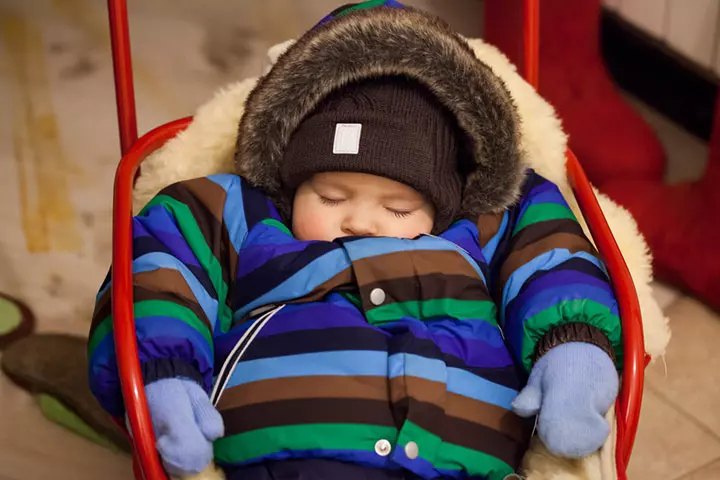
- Friction-induced hives are a result of the skin brushing against the clothes. Due to this, some babies may develop raised bump-like hives at the spots where the skin is scratched, rubbed, or comes under frequent friction. This type of condition is called dermatographism or dermatographism urticaria. It is not known why this friction causes skin hives (4).
- Viral and bacterial infections are another leading cause of hives and are usually spread all over the body. As the immune system fights a virus, the body may display hives. This type of condition is called viral infection-associated urticaria.Viral respiratory illnesses also commonly cause viral skin hives in babies since the body produces immunoglobulins that fight the pathogen, besides inducing hives (5). Among bacterial hives, Streptococcus bacteria-induced hives are most notable. Some parasites may also result in the formation of skin hives.
- Food allergy is one of the leading causes of hives in babies (6). Experts state that foods such as nuts (including peanuts), fish, shellfish, and eggs are most likely to cause hives induced by an allergic reaction (7). Infants who are exclusively breastfed could have allergies if the mother consumes an allergenic food (8).
However, only about 3% of breastfed infants display such allergies (9). Babies older than 12 months may be allergic to cow’s milk (10). Hives can appear within a few minutes to a couple of hours after consumption of the allergic food. - Insect bites and airborne substances may also lead to hives. Allergens commonly found in the air include pollen, the fur of animals, dust, and dust mites. Hives occur as a symptom of the body’s allergic reaction to foreign substances.
 Quick fact
Quick fact- Drug reactions caused due to certain medicines might induce an allergic reaction, thus causing skin hives. Examples of such medications are penicillin, phenobarbital, and sulfonamide (11). According to the American Academy of Pediatrics (AAP), only 10% of cases of skin hives are caused by a drug reaction or medication allergy. A young mother, Sandra, became concerned when she noticed hives on her daughter on an antibiotic course. She consulted her doctor, and they suspected it was hives due to antibiotics. She shares, “They said it looks like hives. Watch out for these signs, and if the rash changes and she gets any open sores, fever, or anything like that, take her to the ER. If she (my daughter) does fine tonight, I need to call in the morning to get an appointment to be seen tomorrow at the doctor’s office (i).”
- Cold-induced hives are a result of low temperatures. Hives may appear on the part of the body that has been exposed to cold wind, snow, or ice-cold water. Older infants may develop hives around lips after eating ice cream. The reasons for the condition are not known (12).

- Sunlight-induced hives can develop on every part of the body that was exposed to direct sunlight. Such hives are called solar urticaria. It is speculated that the condition is caused by the skin’s reaction to the ultraviolet light (13).
Apart from the ones mentioned above, hives may also be caused by autoimmune disorders. Therefore, it is not always easy to diagnose the cause of hives
What Are the Symptoms of Hives In Babies?
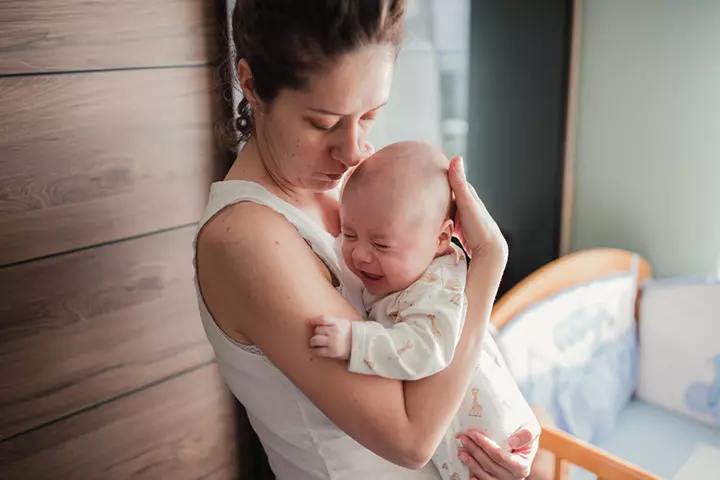
Skin hives can be identified at home. When looking for hives on a baby, check for the presence of the following signs on their skin (2) (14).
- Presence of welts: Welts are small mosquito-like bite bumps in different parts of the body. A welt is a classic symptom of hives, and most associated with the condition. In the case of a food allergy, allergens trigger the production of immunoglobulin E (IgE) antibodies, which cause the release of histamine and other chemicals that result in the characteristic red, itchy welts of hives.
- Display of wheals: The skin develops wheals, a broad raised bump of a pink or reddish tone. The skin is blotched with these patches that are predominantly concentrated around the back, leg, neck, and face.
- Wheals and welts change shape: Patches caused by hives would change shape randomly, from a few millimeters to several centimeters. Some hives may be elongated, shaped like a worm.
- Change in locations: The rashes would appear and disappear over a short period.
- Itchiness and fussiness: The hives rash would often itch, causing irritation and discomfort to the baby and making them fussy.
Take your baby to the doctor once you see hives, as it is good to get a medical opinion. If your baby is showing extreme discomfort and other complications along with hives, such as breathing difficulty and swelling of the face or throat, seek immediate medical care.
 Quick fact
Quick factHow Are Skin Hives Diagnosed?
A doctor would diagnose hives by looking for physical signs and learning more about the baby’s medical history, allergies, and general lifestyle. A blood test could be done to rule out pathogens in the blood if the pediatrician suspects an underlying infection. An accurate diagnosis is made after analyzing the report. However, most of the time blood tests do not provide the answers. (15).
The treatment methods for hives are efficient, but what also works great is the use of home remedies to treat hives in infants.
Home Remedies For Hives In Babies
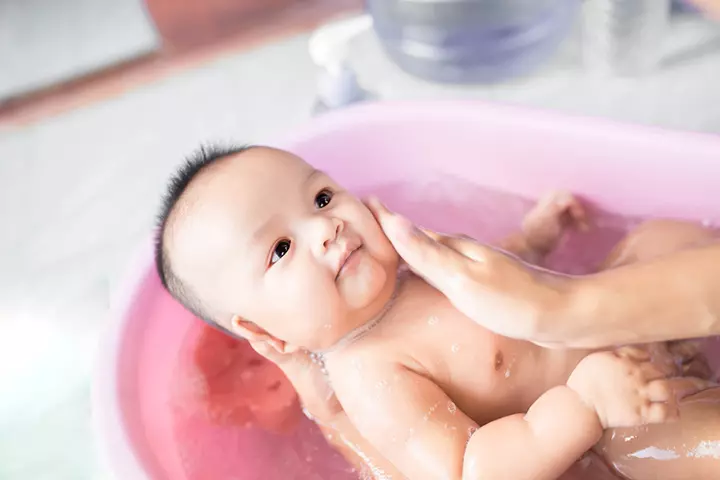
As per pediatric guidance, parents can manage hives at home while using the suggested medication. Here are some home remedies to try:
- Cool water baths: Keep the water cool enough to be comfortable, but not cold. Experts recommend the water temperature for baby baths to not be lower than 85°F (29°C) as it may give chills (16). Giving cool baths help wash away potential allergens on the skin (such as pollen) while also relieving itching (17).
Use fragrance-free bath soap or body wash for the infant. After the bath, pat-dry the baby with a towel and use a baby moisturizing lotion for sensitive skin. - Use cool compresses: Dip sponge or cloth in cool water and apply wherever the baby has itchy skin hives. It provides instant relief from skin irritation caused by constant itching, also known as pruritus (18).
- Dress in loose clothes: Loose clothes help reduce the intensity of friction-induced hives. They prevent sweat-induced hives by facilitating sweat evaporation through air ventilation. Prefer 100% cotton infant clothes over other fabrics (18).
- Use anti-itch creams: Dermatologists also recommend the use of over-the-counter (OTC) anti-itch lotions (15). You can also apply calamine lotion that can soothe skin irritation and may lower inflammation (15). Remember to always use the product as per the manufacturer’s instructions. When in doubt about the usage or its safety for the infant, consult a pediatrician first.
- Trim the baby’s nails: Hives can be itchy, and repeated itching might exacerbate the condition. Keep the baby’s nails short as that will reduce the intensity of itching (18).
Home remedies for hives are simple, but at times they may not be of effective help. In such a case, medical intervention is warranted.
What Are The Treatment Options For Hives?
Hives usually cure on their own without any treatment (15). Nevertheless, a doctor may prescribe a medication to control the symptoms and treat the underlying cause of the condition:
- Antihistamines are a standard prescription medicine administered to bring down the itching and redness caused by hives, and not cure the condition. These medicines are effective, baby-safe, and do not make the little one drowsy. Although they are available OTC, it is best to consult a doctor before using them.
- Steroids are only prescribed in severe cases, as they have side-effects (19). They are used only in case of chronic hives or when the baby shows no response to antihistamines. Steroids are administered for shorter duration (five days to two weeks) to prevent side-effects.
- Antibiotics and antiviral medicines do not treat hives but cure the underlying bacterial or viral infection that has led to hives.
- In severe chronic cases other modalities of treatment might be offered by your doctor.
If any of these symptoms occur with hives, contact your doctor immediately:
- If your baby struggles to breath
- If there is tightness in the throat
- Nausea and vomiting
- Cramps and stomach pain
- If the child becomes unconscious
 Did you know?
Did you know?How To Prevent Hives In Babies?

The risk of hives can be significantly mitigated by taking the following steps:
- Protect the baby from allergens. Keep the baby away from any substance that you know could trigger an allergic reaction. Babies who are allergic to pollen should stay indoors to prevent inhalation of pollen. In the case of sweat-induced hives, keep the baby in a cool environment. Maintain a log of baby’s allergies so that you and other family members are aware of the potential triggers.
- Clean the baby and change clothes: Do this when you come from outside, as the skin and clothes could trap microscopic pollen and dust that may cause allergy-induced skin hives.
- Maintain favorable temperature and humidity: If it is too hot, then use an air conditioner to control the baby’s sweating. In winters, when the weather gets too dry, use a humidifier as it will keep the baby’s skin hydrated. The American Academy of Pediatrics recommends the use of only cool-mist humidifiers for infants (20).
- Protect the baby from pathogenic infections: Virus and bacteria can induce skin hives. Shield the baby from pathogens by maintaining good hygiene and feeding the baby well for strong immunity.
- Use baby laundry detergent: Potential allergens from regular detergents could linger on the clothes even after a wash. To prevent this, use only baby laundry detergents to wash an infant’s clothes. These detergents are formulated using chemicals that are soft and harmless on a baby’s delicate skin.
Frequently Asked Questions
1. What viruses can cause hives in babies?
Respiratory viruses, mononucleosis, and hepatitis are some viral infections that may cause hives in babies (21). Your doctor would diagnose the underlying viral infection responsible for the occurrence of hives.
2. How long do hives last in babies?
Acute hives may last for six weeks or less; chronic hives may last for more than six weeks or can also be recurrent (21).
3. Can breast milk cause hives in babies?
Allergy to human breast milk is rare. Two or three of one hundred exclusively breastfed babies may exhibit an allergic reaction. This reaction is often to something in the maternal diet, most commonly cow’s milk (9).
4. Are baby hives normal?
Hives among children are common and harmless. Studies indicate that more than forty percent of children get acute urticaria (hives) due to infections (22). However, they may also get hives due to an allergic reaction. In most cases, hives on babies are normal and not a cause for immediate concern.
5. What does an allergy rash look like in babies?
Rashes or dermatitis are irritated patches of dry or scaly skin that may be red, itchy, and occasionally inflamed. Examples of rashes due to skin allergies in babies include hives, blisters, pimples, and lumps (23).
It may be worrisome for parents to witness red rashes or hives on babies. These rashes could resemble a typical heat rash or miliaria; hence you may consult a healthcare professional for timely diagnosis and appropriate medical intervention. You may capture the images of the rashes as they could vanish by the time you reach the doctor’s clinic. The images could aid in the accurate evaluation. Follow certain simple homecare measures and the treatment strategy as per the doctor’s advice to cope with this condition effectively. Nevertheless, you may focus on some simple yet crucial preventive tips that could help keep your baby’s skin healthy and hives-free. Stay alert to the triggers and avoid them to prevent hives in babies.
Infographic: When To Go To The ER For Your Baby’s Hives?
Although hives may seldom become severe, it is crucial to be aware of the concerning signs to avoid complications. Since different bodies react differently, you must learn when your baby may need emergency care during an episode of hives. This infographic will help you spot the signs to seek prompt and timely medical attention. Illustration: Momjunction Design Team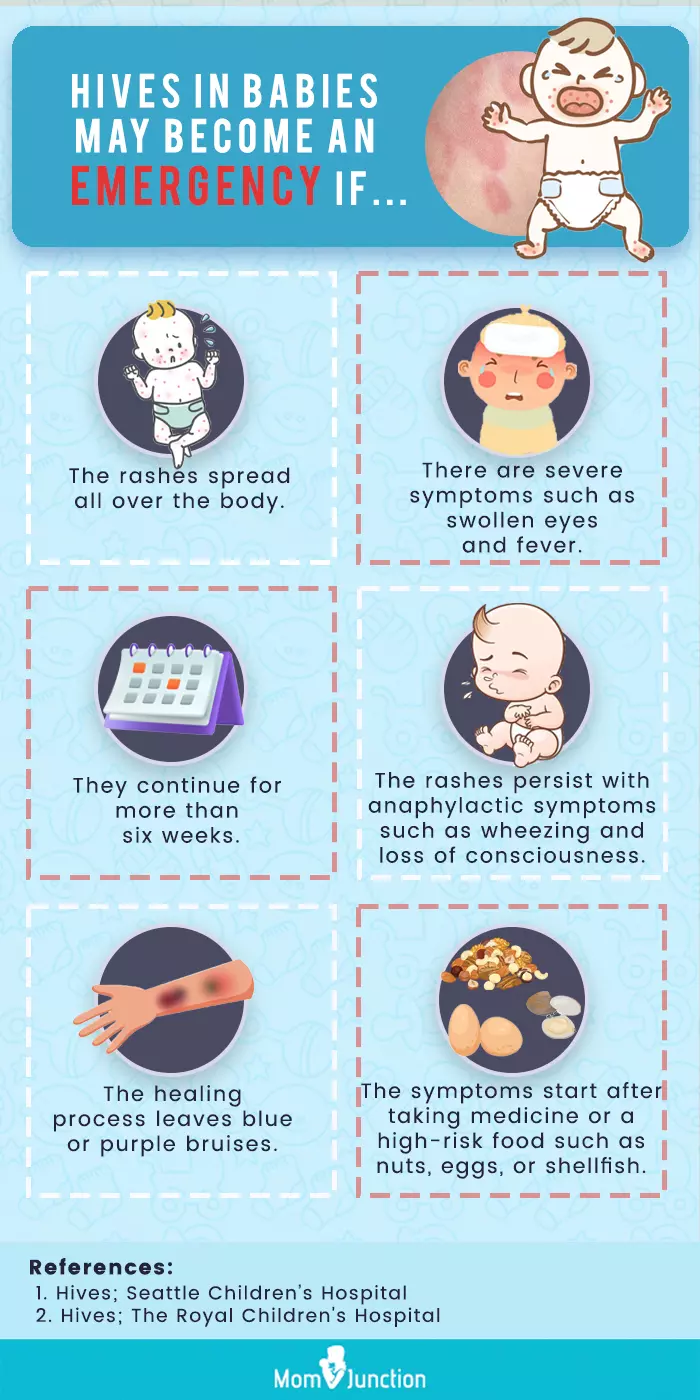
Illustration: Hives On Baby: Causes Symptoms Treatment And Prevention
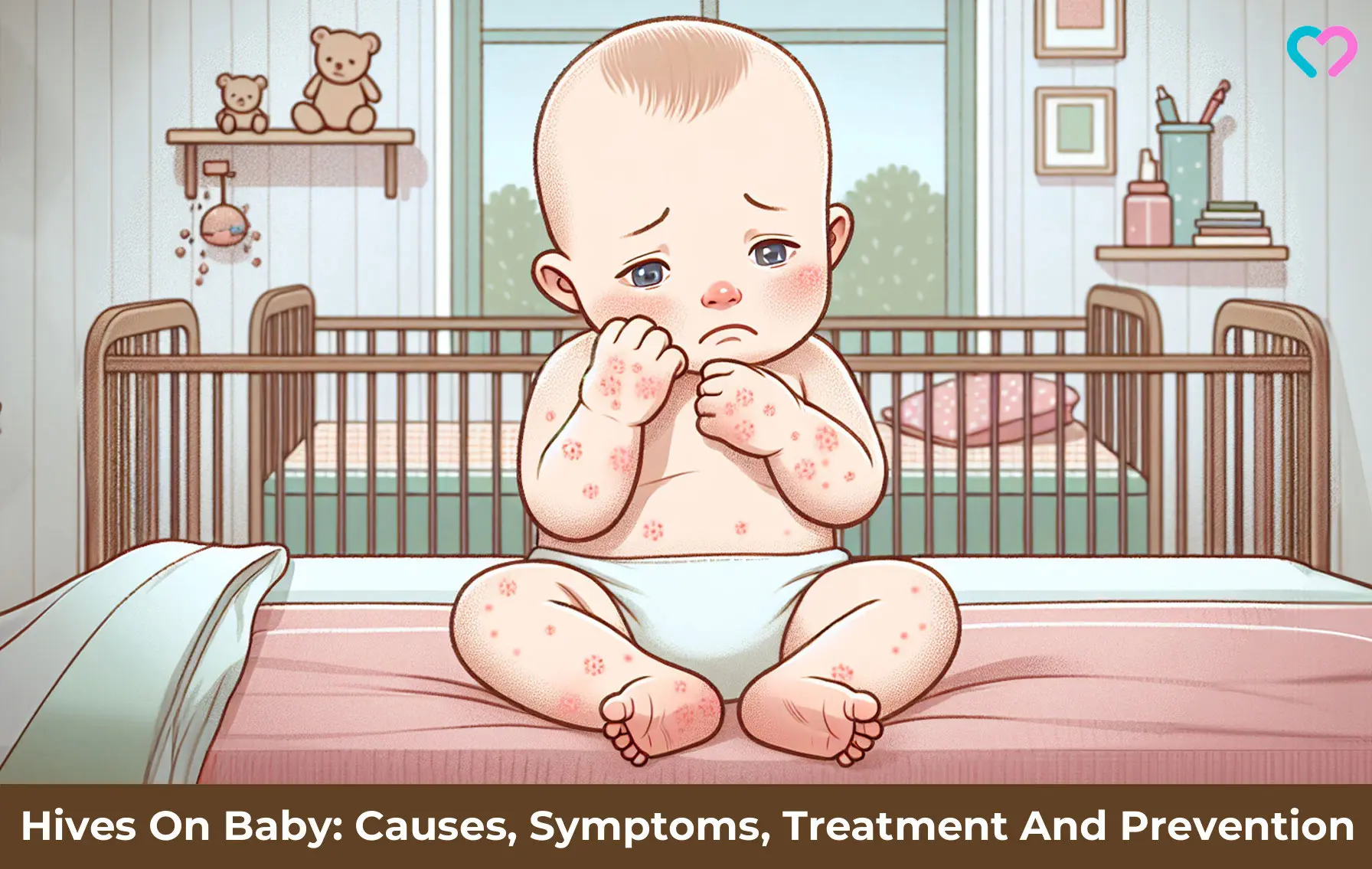
Image: Dall·E/MomJunction Design Team
Young children can suffer from allergic urticaria, or hives, due to a variety of causes. Learn what can trigger this uncomfortable condition in kids.
Personal Experience: Source
MomJunction articles include first-hand experiences to provide you with better insights through real-life narratives. Here are the sources of personal accounts referenced in this article.
i. My baby broke out in hives;https://www.youtube.com/watch?feature=shared&v=KAmXfPz4yos
References
1. Hives; Healthy Children; American Academy of Pediatrics
2. Hives; Symptom viewer; Healthy Children; American Academy of Pediatrics
3. Hives / Urticaria; Columbia Doctors
4. Timothy Nobles and George J. Schmieder.; Dermatographism; National Center For Biotechnology Information (2018)
5. S J Deacock; An approach to the patient with urticaria; National Center For Biotechnology Information (2008)
6. Food Allergy; Seattle Children’s Hospital
7. Hives; Children’s Hospital of Philadelphia
8. Herbert Brill; Approach to milk protein allergy in infants; National Center For Biotechnology Information (2008)
9. Infant Allergies and Food Sensitivities; Healthy Children; American Academy of Pediatrics
10. Milk & Dairy Allergy; American College of Allergy, Asthma and Immunology
11. Urticaria (Hives) in Children; Health Encyclopedia; University of Rochester Medical Center
12. Cold urticaria; Genetic and Rare Diseases Information Center; U.S Department of Health and Human Services
13. Sun Allergy (Photosensitivity); Harvard Medical School
14. Hives; The Royal Children’s Hospital, Melbourne
15. Hives: Diagnosis And Treatment; American Academy of Dermatology Association
16. Sponge Bath for a Child’s Fever; University of Michigan
17. Hives; Seattle Children’s Hospital
18. Hives: How to get relief at home; American Academy of Dermatology Association
19. Urticaria; The University of Chicago
20. Children and Colds; Healthy Children; American Academy of Pediatrics
21. Urticaria in children; DermNet
22.Meeyong Shin and Sooyoung Lee; Prevalence and Causes of Childhood Urticaria; NCBI
23. Rashes; Nemours
Community Experiences
Join the conversation and become a part of our nurturing community! Share your stories, experiences, and insights to connect with fellow parents.
Read full bio of Dr. Elna Gibson
Read full bio of Rohit Garoo
Read full bio of Dr. Ritika Shah
Read full bio of Shinta Liz Sunny








